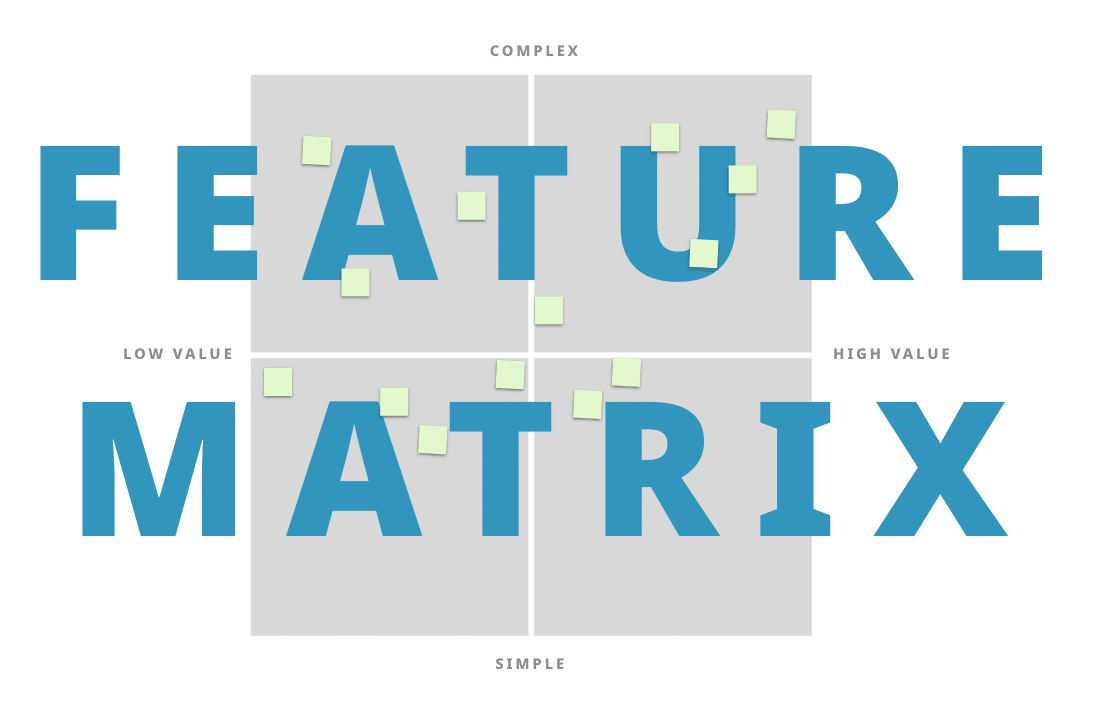Article summary
Narrowing down potential features at the start of a project can be a challenge. After a project kickoff, there are often so many exciting ideas that making heads or tails of them can be paralyzing.
Should your team find themselves in this situation, an adapted quadrant mapping exercise might be a great tool. It’s less boring and way less technical than it sounds, but it’s well worth the time investment. Let’s jump in.
The Goal
This exercise draws out a few extremely useful pieces of information:
- Which potential features would have the highest value?
- Which potential features pose the biggest risk?
- Are there any high-value, low-complexity features we can use to get the project off the ground?
- Which features can be given attention at a later time?
Along the way, you should also get a handful of useful pieces of information to help manage the project and better understand client expectations.
The Activity
1. Make a Card for Each Feature
To run the exercise, you need a list of features to discuss. Your clients may come prepared with a lengthy list of features they’d like. Otherwise, you can create one through brainstorming or ideation exercises.
Create a separate card for each feature. I like to use sticky notes.
2. Rank Features by Value
Review each feature and assign it a position on the x axis, with low value on the left and high value on the right:
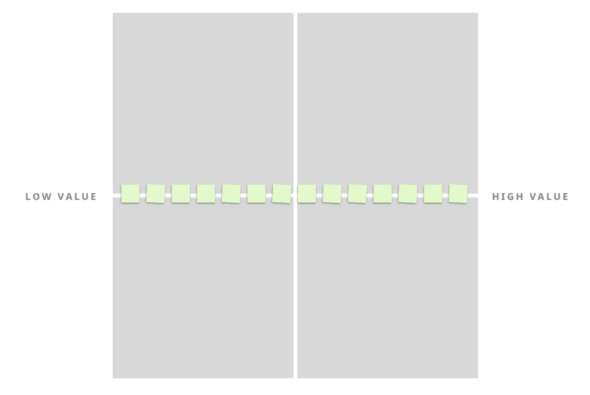
3. Rank Features by Complexity
Leaving the cards in their horizontal orientation, move each card up or down to assign it a level of complexity:
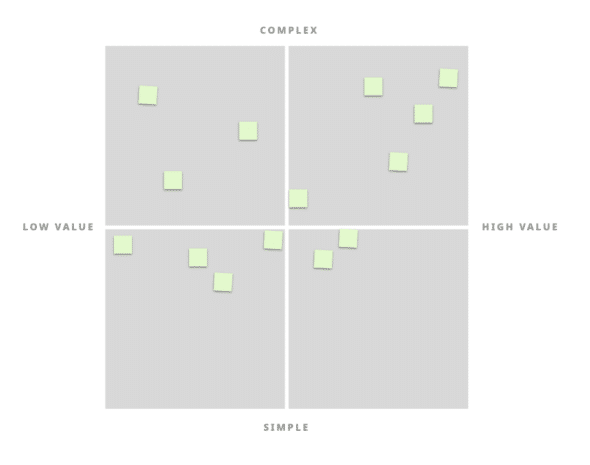
The mapping doesn’t need to be perfect. While your final product is valuable, the discussions you have during the exercise are equally valuable. The facilitator should note which features the clients get excited or nervous talking about, plus any other potential risks that people bring up.
It’s very helpful to have a skilled facilitator walking the stakeholder through this process. They can expedite things and uncover additional pieces of useful information.
The Result
You now have four quadrants of features. This will help you decide how to prioritize them.
High Value + High Complexity
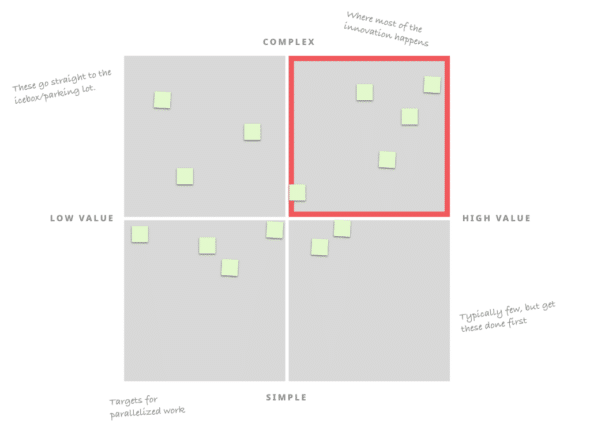
This is where you’ll find most of the things that will make your product innovative. On our projects, we often have a significant number of features in this quadrant, which makes sense if since our clients are trying to solve complex and rather unique problems.
High Value + Low Complexity
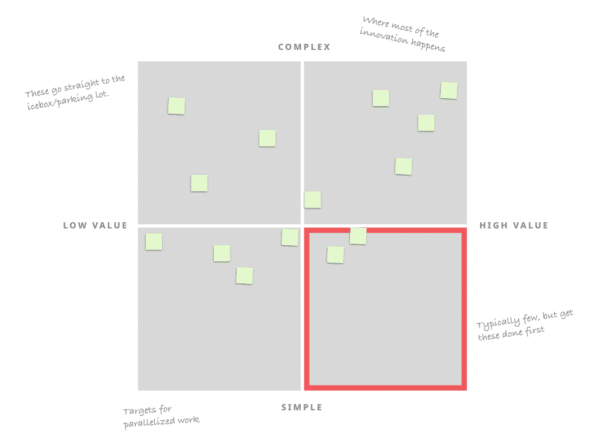
These features are often a great place to start design/development. They can be quick wins, getting the team exposed to new tools and languages while delivering significant value to the client right off the bat. It’s a good way to get the relationship rolling.
Low Value + Low Complexity
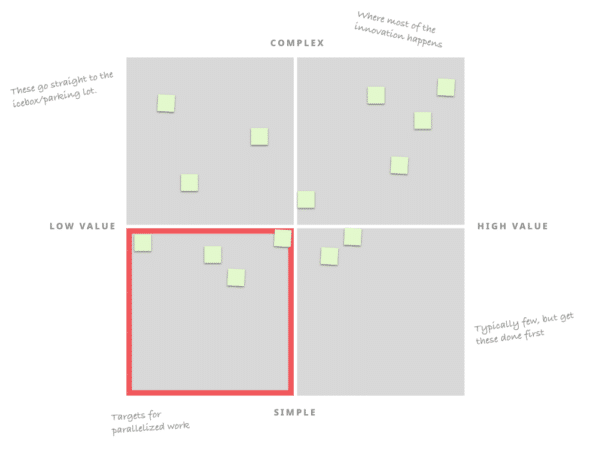
These features often don’t impact other areas of the application, so they’re great for parallelization. If only part of the team is needed for a high-value, high-complexity feature, the rest of the team can tackle features in this category.
Low Value + High Complexity
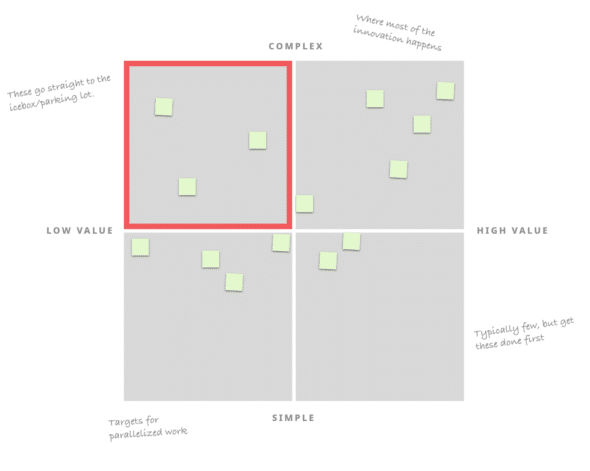
The features in this zone (especially near the top) typically go straight to the icebox or parking lot. They’re obviously your lowest priority.
But don’t throw them out! As the product develops, their value will likely increase. After you issue your first release and gather feedback, revisit this activity. You may even decide to do it all over again with your remaining (and new) feature ideas.
What’s Next?
Take a close look at the features in the highlighted area:
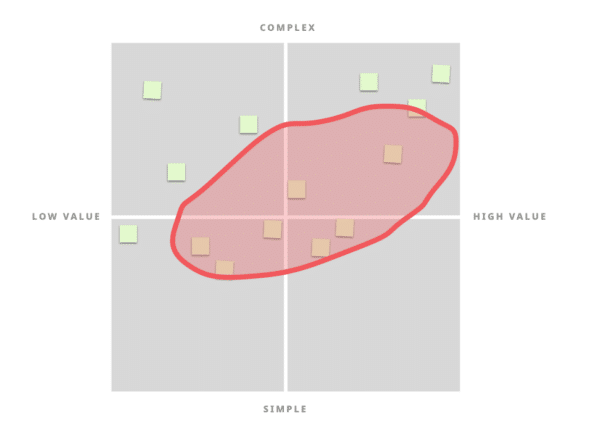
Work with the team and client to identify the right set of features based on the mapping and what was discussed. Then start building out the story map/backbone to start bringing shape to the product.

